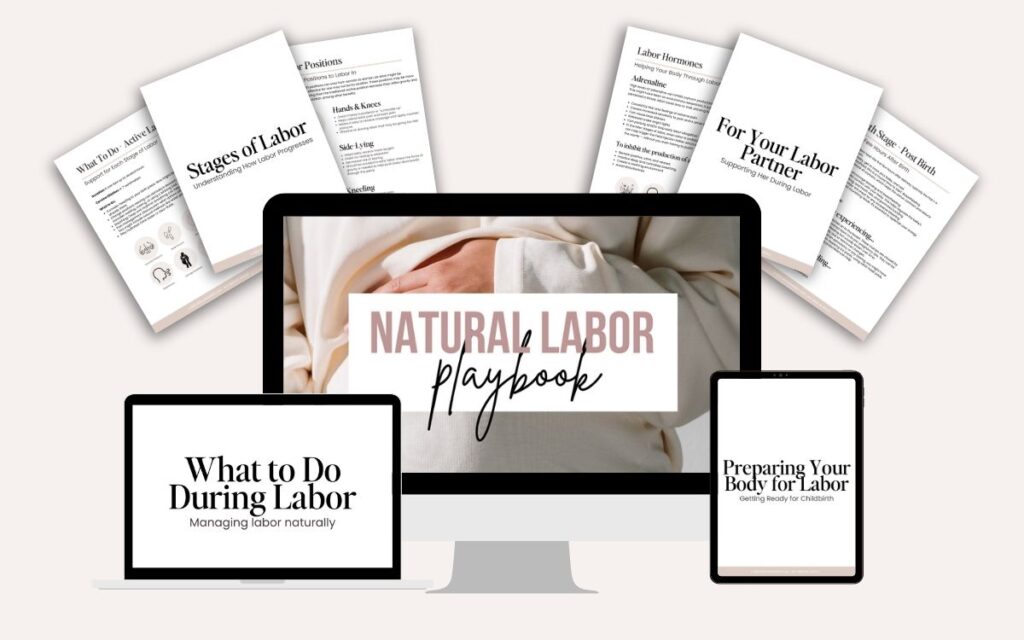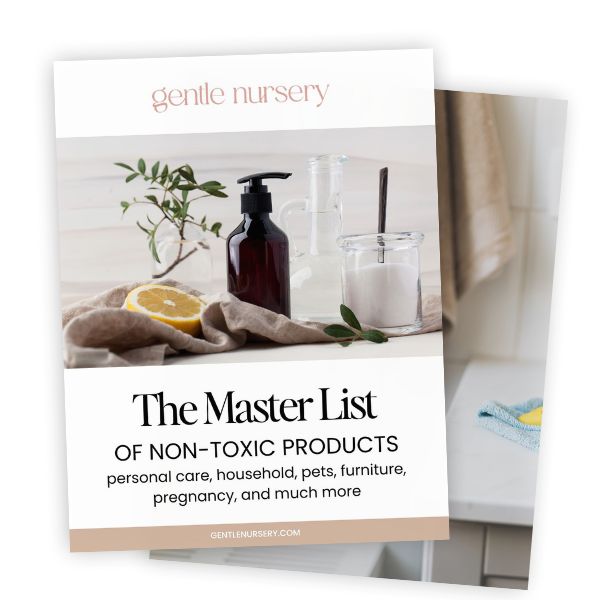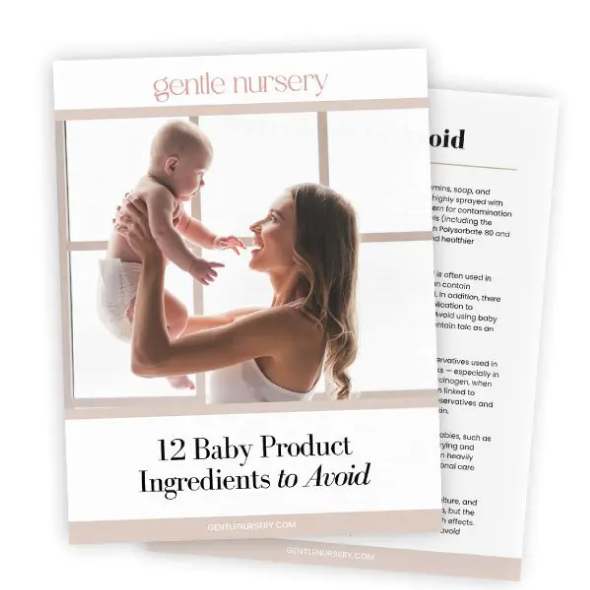Many moms who are new to natural birthing don’t consider laboring at home.
In fact, studies show that most moms actually arrive at the hospital in the very early stages of labor, for reasons such as pain, anxiety, and uncertainty— all of which are normal.
But did you know that laboring at home as long for as long as you can, can improve your chances of having a safer and successful natural birth?
Keep in mind that not everyone can labor at home; this is especially true if there are serious complications during pregnancy.
But if you have a healthy pregnancy with no complications, you may want to consider waiting a bit before going to the hospital once you’re in labor.
Here are seven reasons why you should consider laboring at home. And while you’re here, don’t forget to jot down these 5 tips to help you labor at home as long as possible.
Reduced risk of medical interventions by laboring at home
Studies show that maternity care in some of the world’s most developed nations is heavily intervention-intensive.
Common birth interventions include:
- continuous fetal monitoring
- episiotomy
- artificial rupturing of membranes
- c-section
- pain relief, such as epidural
- augmentation such as Pitocin
- IVs
- Restrictions on eating and drinking
- Restrictions on movement and positioning
This means that the more time you spend in a hospital once you go into labor, the higher the risk of experiencing medical interventions.
Laboring at home as long as possible lowers your risk of experiencing potentially unnecessary medical interventions.
The results of a 2013 survey showed that medical interventions are performed more often unnecessarily than not, disturbing the normal physiology of labor, and increasing the risk of complications for both mom and baby.
Don’t get me wrong, when an intervention is deemed absolutely necessary to ensure the safety of both mom and baby, I am all for it.
But most women who are having healthy pregnancies can and should spend time laboring at home until their contractions are well-established. (Check out The Natural Birth Playbook for a more detailed game plan for each stage of labor.)

Unrestricted movement while laboring at home
Freedom of movement during labor is definitely one of the simplest yet most effective natural tools for pain management.
I know you see women giving birth on TV while on their backs all the time, but being on your back during labor is one of the worst things you can do!
Trust me when I tell you that when those contractions start getting stronger and closer together, especially before you hit transition, you are going to want to move.
Staying put will not feel like a good option, because it isn’t!
According to The Journal of Perinatal Education, “women who use upright positions and are mobile during labor have shorter labors, receive less intervention, report less severe pain.”
Being upright during labor helps gravity help you by moving your baby down the birth canal.
It also helps make your contractions more effective, prevents tearing, widens your birth canal, keeps the pelvis aligned, and helps your baby get a good supply of oxygen.
Some hospital policies such as having IVs during labor and continuous fetal monitoring (the worst) can mean that your movement during labor is restricted.
So it’s important that you get that figured out beforehand, so you can give birth in an environment that suits your needs.
Higher chance of a successful natural birth
Studies show that the less time you spend in a hospital, the more likely you are to have a successful natural birth.
Hospitals have policies that typically will not allow laboring moms to labor as long as they need to.
Once you go through triage and are admitted, you are put “on the clock”.
This means that you are expected to go through each stage of labor in a specific amount of time.
If your labor isn’t progressing as fast as they’d like to see, you will start getting offered Pitocin to increase your contractions, which can then lead to you needing an epidural, and so on and so forth.
Laboring at home until your contractions are very strong and well established, as well as getting closer together will definitely help you achieve your goal of having a successful natural birth.
More oxytocin flows while laboring at home
Oxytocin is the hormone that is primarily responsible for your contractions.
As you progress through an undisturbed birth, these contractions get stronger and more intense as more oxytocin is released.
Laboring at home helps the continuous flow of oxytocin since one of the best ways to encourage your body’s production of this hormone is to feel comfortable, safe, and relaxed.
How much more relaxed and “in your element” would you be in your own home, as opposed to in a hospital room?
The natural process of labor is driven by hormones but it’s important to remember that the production and flow of these hormones can very easily be disrupted.
All it takes is one too many lights being on, too many people going in and out of your birth space, or some random hospital machine beeping too loudly, and your mind is thrown off, causing your hormones to be affected as well.
Laboring at home allows you to be 100% comfortable in your own space that you have 100% control over.
Faster labor
Laboring at home can also help you labor faster than in a hospital setting!
We already know that it takes the perfect cocktail of hormones to help your body initiate labor and to power you through childbirth.
This flow of hormones as we discussed earlier can easily be disrupted, slowing down or stopping labor altogether, and then causing a need for multiple interventions.
All of these interventions disrupt the natural process of labor, potentially increasing the amount of time you spend laboring.
Staying home allows your body to go through all the earlier stages of labor, in a way that truly lets your body do what it needs to do without interfering with any of its natural processes.
By the time you get to the hospital, you’ll probably be just about ready to give birth!
Easier time coping with pain
Looking back on my birth experiences, I could definitely say that laboring at home was best.
I could not imagine myself being in a space that was not mine with many people going in and out and touching me… when all I wanted to do was be alone and breathe through the contractions.
I stayed home for some time, so I definitely think that being in my own element made coping with the pain much easier.
I ate, I took a long shower, I walked around my home, I just did things at my own pace which made time fly and made labor easier to manage.
Not on the clock
Laboring at home means you are fully allowed to labor at your own pace.
You won’t have several people walking in and out of your room looking concerned if you’ve been laboring for 10+ hours, causing you to question yourself.
There won’t be anyone constantly poking at you and trying to check you every 5 minutes only to tell you that you aren’t progressing fast enough.
You will not be rushed and your body and baby will be given the time needed to labor in peace!
Is this your first natural birth?
If you answered yes to this question, this is for you.
After reading this you may really be very well interested in laboring at home, but you’re also probably concerned about not knowing when you should head over to the hospital (that’s if you’re planning on having a natural birth in a hospital setting).
The truth is, you will most likely know. By going through labor naturally, without having any drugs numbing your senses, you will fully be able to feel what is happening within your body.
I knew when I was about to give birth because my contractions became increasingly harder to manage and they were literally 2 minutes apart.
You may be told to use the 4-1-1 rule (contractions coming every 4 minutes, lasting 1 minute, for at least 1 hour), before even considering giving your healthcare provider a call. But it’s all up to you.
When I was 8-9cm dilated my contractions were pretty following the 2-1-1 pattern. So they were coming in fast and heavy!
I knew that if I stayed any longer I would’ve given birth at home. This is definitely my plan for my future births but I hadn’t thought of it for my first baby!
My advice is to relax and focus on what’s happening internally during labor.
Pay attention to how you’re feeling during labor. The more effort you have to put into managing each contraction, the closer you are to giving birth.
The more irritable you get during each contraction, the closer you are to meeting your baby.
The closer and stronger your contractions get, the further you are in the process of childbirth.
If you’re still concerned about not knowing what’s going on during labor, one of the best things you can do before you go into labor is to hire an experienced doula. Support is key during childbirth!
A doula is an experienced birth worker who can be of great help to you, especially during the earlier stages of labor so that you don’t end up going to the hospital earlier than you really need to.
Take the Guesswork Out of Labor With My Natural Birth Toolkit
Are you worried you might forget all of your labor prep and info… during labor?! Grab The Natural Labor Playbook, your ultimate labor cheat sheet for natural-minded mamas for only $7!











I wanted to have an in home bathtub experience but my children had other plans. I suffered from preeclampsia with both of my pregnancies and had two c-sections.
With my 2nd, I spent the first half having contractions at home. Granted, my total labor time was only 4.5 hours from first contraction to final push, so it really wasn’t that long. I was mainly at home because I was arguing with L&D on the phone saying YES I need to come in when they told me to just rest. If I hadn’t listened to my gut it would have been a car baby or home baby LOL which we were not equipped for LOL
These are great tips! I’m 27 weeks pregnant with my 3rd and planning to labor at home as long as possible for better chances of an unmedicated birth! I had to be induced with my first two and while I managed to forego the epidural with my second, the hospital interventions were not ideal!
I think now, I would be somewhat prepared to labour at home.
I so was scared when I first gave birth almost 16 years ago.
I had to be induced with all three pregnancies, so I have no idea what it is like to go into labour on my own, let alone labour at home. By the time baby number three came along, they have changed the rules towhere I didn’t have to strapped to machines the whole time and I could move around. It was such a much more better experience.
Such great reasons to labour at home! It’s absolutely something I considered purely for comfort reasons initially but also because I was worried about having unnecessary medical interventions.
I stayed in the comfort of my home for as long as possible when I went into labour. I went to the hospital when my contractions got quite painful. I got there with 8cm dilation. I agree with you. Unless there are health reasons, a home labour is much more comfortable.